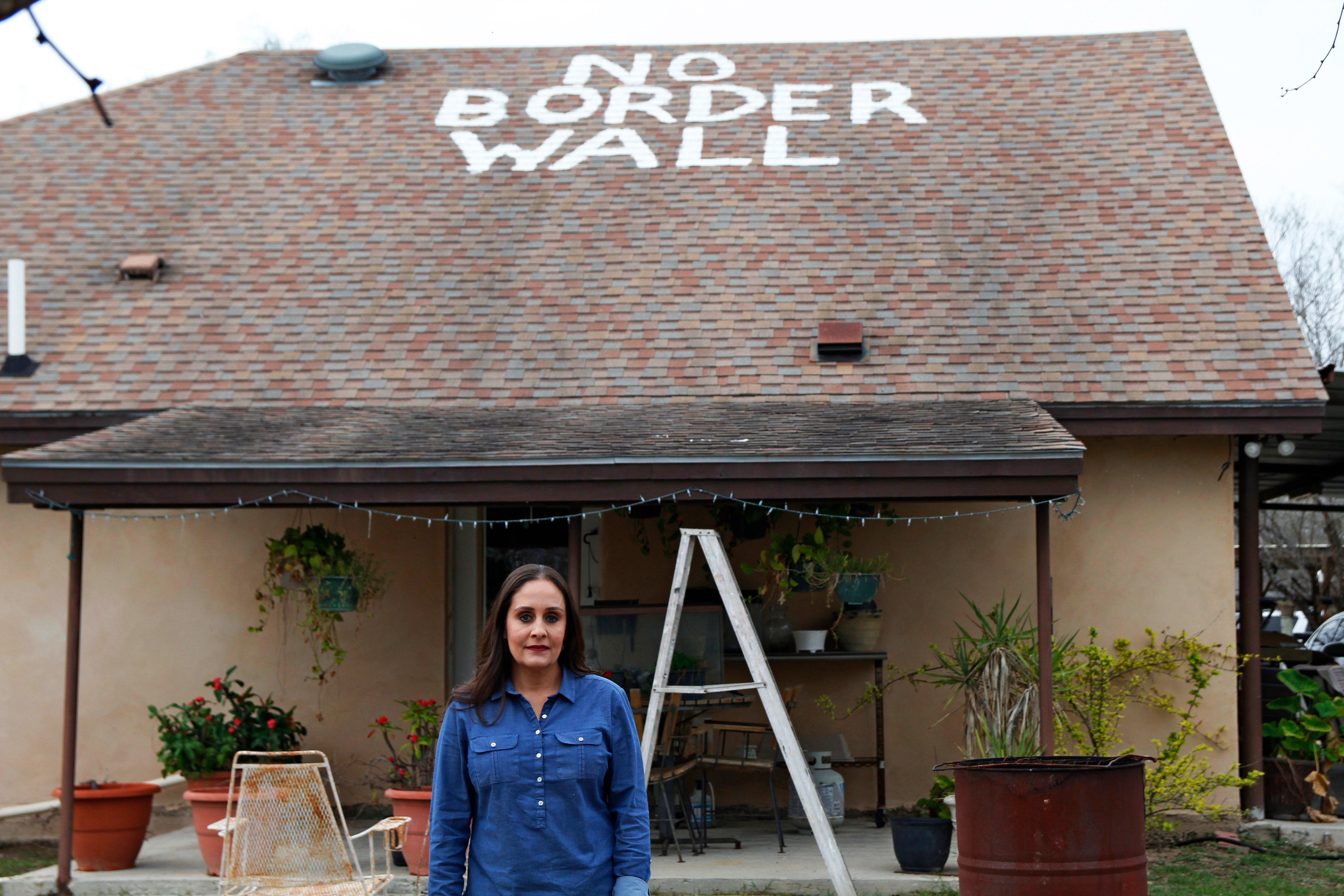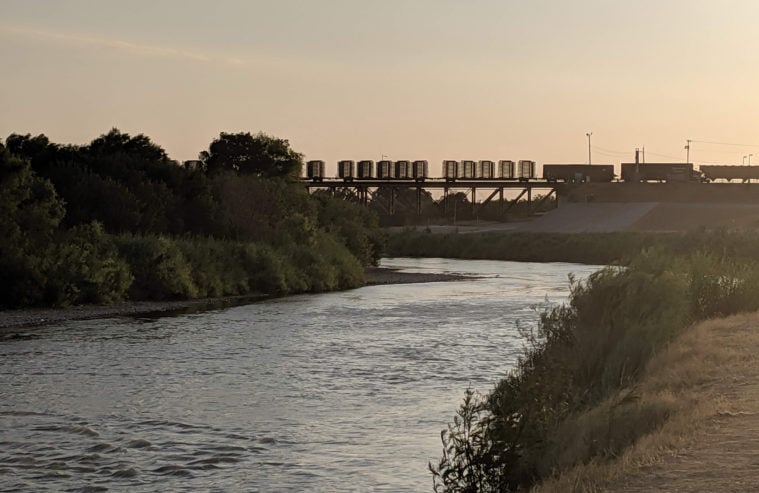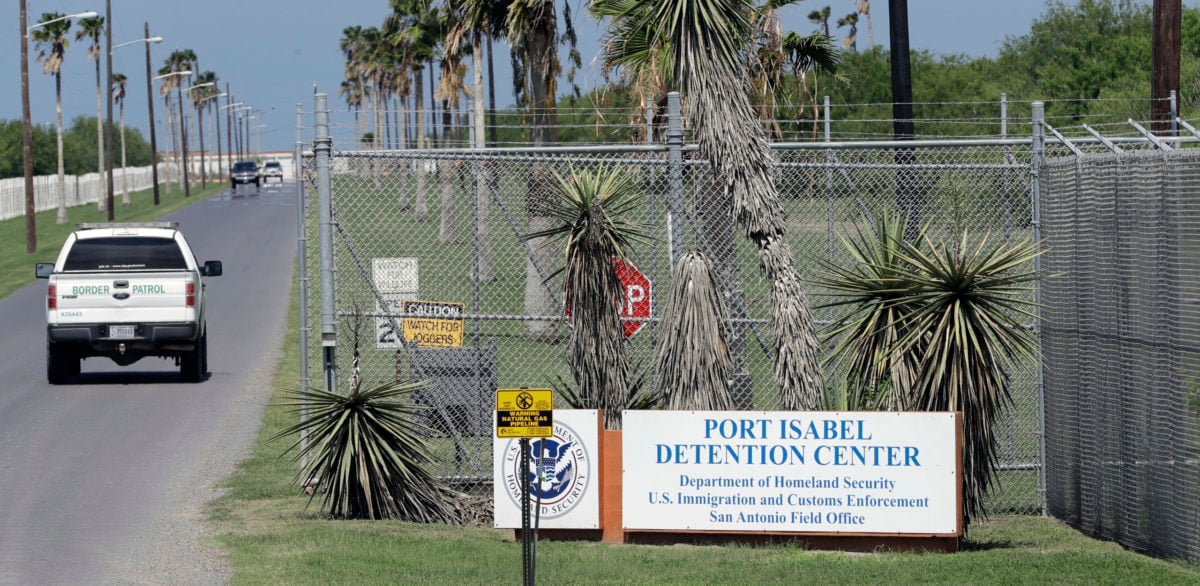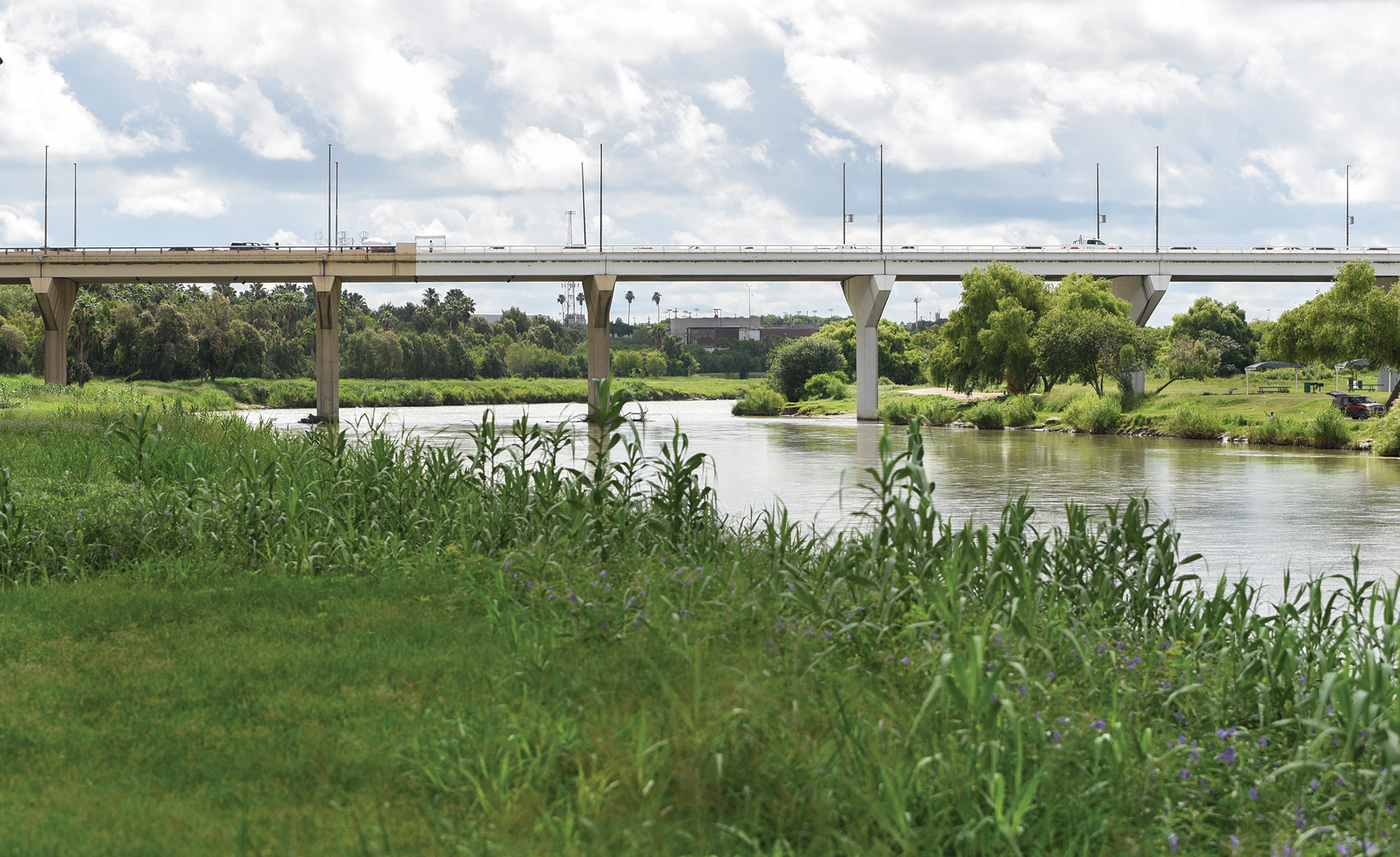
‘Not Celebrating Yet’: South Texans Wait for Biden to Cancel Trump’s Wall
The president’s pause on wall construction leaves questions unanswered in Texas.

Above: Nayda Alvarez is a public school teacher in the Rio Grande Valley. Her home, less than a football field’s length from the Rio Grande, is threatened by the border wall.
In an interview last August, Joe Biden made a pledge: “There will not be another foot of wall constructed in my administration.” It was the first time the then-presidential candidate made such a clear promise. On January 20, hours after assuming office, he took executive action to pause wall construction for two months, idling excavators and bulldozers along the U.S.-Mexico border. But Biden’s order did not cancel outstanding construction contracts, withdraw eminent domain lawsuits, or revoke the waivers of environmental and historic preservation laws that allowed the project to proceed without normal safeguards—leaving South Texans still fearing a border wall could soon rip through their backyards.
“I can’t breathe yet,” says Nayda Alvarez, a teacher in rural Starr County whose house sits less than 100 yards from the Rio Grande. Over a year ago, the government began the process of taking part of her land for the wall, but she still retains ownership. Now she just has to wait, unsure whether she can safely invest in planting new trees on her property, or repairing her roof. “I’m tired of not being able to plan for tomorrow because I don’t know what the hell’s going to happen.”
Since 2017, the federal government constructed some 450 miles of border wall—the vast majority in the form of replacing low-slung vehicle barriers in the Southwest with taller fencing on land the feds already owned. In South Texas though, where nearly all the land abutting the Rio Grande lies in private hands and often must be expropriated through lengthy legal proceedings, Trump proceeded at a glacial pace, with construction often falling months behind schedule. In the Rio Grande Valley, at Texas’ southern tip, Trump finished about 20 out of more than 100 miles in the works. Of that mileage, almost all is in Cameron and Hidalgo Counties, with rural and flood-prone Starr County still largely untouched. Further upriver, in Zapata County and Webb County, home to Laredo, Trump hasn’t broken ground on the more than 120 miles planned for the area.

In his executive proclamation, Biden halted construction to develop a plan “for the redirection of funds concerning the southern border wall, as appropriate and consistent with applicable law.” With a few reported exceptions, construction is halted, and the Justice Department has paused eminent domain court cases to await the new plans. But Texas wall opponents remain anxious: Terminating the wall in the Lone Star State may require paying contract cancellation fees, and Congress may need to get involved. During the Bush administration, Biden voted for the Secure Fence Act, which eventually led to 654 miles of border wall, and he was vice president when Obama decided to finish constructing Bush’s wall, building in Texas as late as 2011. So will Biden really follow through now?
“I’m not celebrating yet,” says Ricky Garza, a McAllen-based attorney with the Texas Civil Rights Project (TCRP). Garza’s group is calling on Biden to dismiss condemnations, return land that’s been taken, and compensate landowners for the time their property was tied up in court. “The proclamation was a good start, but if it doesn’t protect families’ homes then it’s ultimately meaningless to people in the Valley.”
Fred Cavazos, a 71-year-old client of TCRP, has fought to save his family’s land south of Mission for more than two years now. The Cavazos’ 65 acres fell under the first Trump-era contract for new border fencing in South Texas, with construction initially scheduled to start in February 2019. The wall has been finished or partly built on his neighbors’ properties, Cavazos says, but his remains untouched. Federal attorneys have sued to condemn part of his land but haven’t gone through the final motions to take possession. He’s “praying” Biden permanently cancels the wall.
In a February policy memo, the Washington Office on Latin America (WOLA), a D.C.-based nonprofit, attempted to map a path to unwind wall construction. One step, according to WOLA, is fairly simple: Biden should have no trouble nixing unfinished fencing that Trump funded with billions of dollars diverted from the U. S. Department of Defense, since legislators never directed that money be spent on a border wall. But that means little to South Texas, where most planned construction was funded by Congress, with approval from many Democratic lawmakers.
Within the Congressional monies, there are two pots: 2018 and 2019 funding for “pedestrian fencing” in the Rio Grande Valley, and 2020 and 2021 funding for “barrier system,” much of which is headed for the Laredo area. According to WOLA, Biden has two possible paths to keep his promise of “not another foot.” He can convince Congress to retroactively rescind the funding or rewrite the language so the money can go to other purposes. Or, without Congress, he might creatively interpret the existing language, using the money to fund non-wall border security measures, like surveillance technology, or perhaps even to tear out tall border fencing and replace it with small barriers that allow wildlife to pass freely. The reinterpretation option may be easier with the Laredo section than the Valley portion due to the differing language in the laws, according to Adam Isacson, WOLA’s director of defense oversight.
Isacson also says that simply refusing to spend the money and letting it expire may risk running afoul of the Impoundment Control Act, a 1970s law meant to stop presidents from thwarting the will of Congress. The White House and Homeland Security press offices did not respond to a request for comment.
Ultimately, one outcome could be that Biden redirects money that would have gone to a physical wall to what critics call a “virtual wall.” That would mean an expansion of the existing security state at the border, increasing the number of ground sensors and looming camera towers, patrol roads and floodlights. In his campaign platform and recently filed immigration legislation, Biden endorsed surveillance technology at the border, and Laredo Congressman Henry Cuellar has supported this approach. But local environmentalists and civil libertarians, who already live in something of a militarized zone, oppose additional surveillance.
“One of the fundamental problems with Congress is when they think about the border, they kind of forget that there are human beings here and there’s stuff that can be damaged here,” says Scott Nicol, a McAllen-based environmental activist and longtime wall opponent. Nicol adamantly opposes a virtual wall approach, and, for him, “not another foot” should be just the start. He wants Biden to begin the process of tearing down existing fencing all along the border, starting with ecologically sensitive areas and places culturally important to Indigenous nations. He also wants Biden to hamstring any future wall-building president by repealing the 16-year-old law that allows the feds to waive environmental and historic preservation laws at the border. “We need to move on to a paradigm shift that gets us past militarizing the border.”
Read more from the Observer:
-
A Texas City Had a Bold New Climate Plan—Until a Gas Company Got Involved: The fossil fuel industry is using the same playbook to fight city climate plans around the country.
-
Portraits of the Pandemic—Part Two: Last summer, we talked to nine Texans about their experiences with COVID-19. Now, we check back in with those folks—and hear from a few new ones—who have graciously shared their stories.
-
Planned Parenthood Returns to Lubbock: In an effort to defund Planned Parenthood, state leaders have dismantled Texas’ reproductive health care safety net over the last decade. This fall, the provider reopened a clinic in a mostly rural, Republican part of the state.


